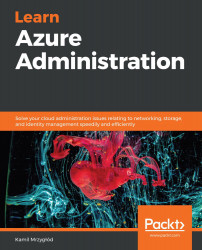Before we dive into this topic, you have to understand what Azure Front Door really is. When it comes to supported OSI levels, we can separate Azure services like this:
- Level 4 (Azure Load Balancer)
- Level 7 (Azure Application Gateway, Azure Front Door, Azure Traffic Manager)
Now, depending on your needs, you may require a different set of functionalities:
- If you need SSL offloading, you have to operate at the application level (level 7). Load Balancer will not offer you this kind of feature.
- If you need to be as close to the network layer as possible, you will have to choose level 4 services (so in the case of Azure, Azure Load Balancer).
- If you want to perform URL routing, once again, you will have to address this problem with level 7 services. Use Azure Application Gateway or Azure Front Door to achieve what you need.
Sometimes, the best solution to a problem is using multiple services at once – you may want to initially route requests...



